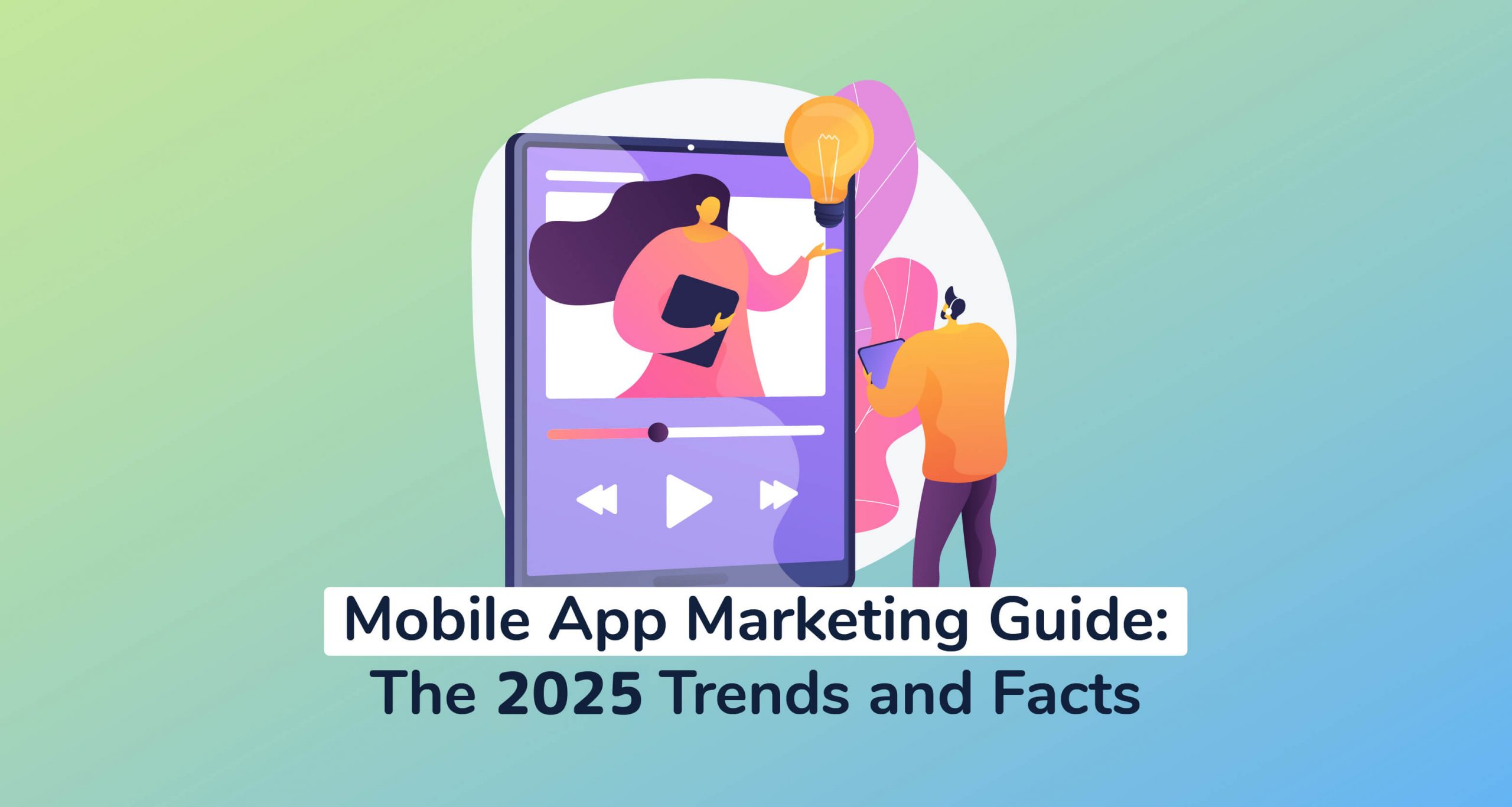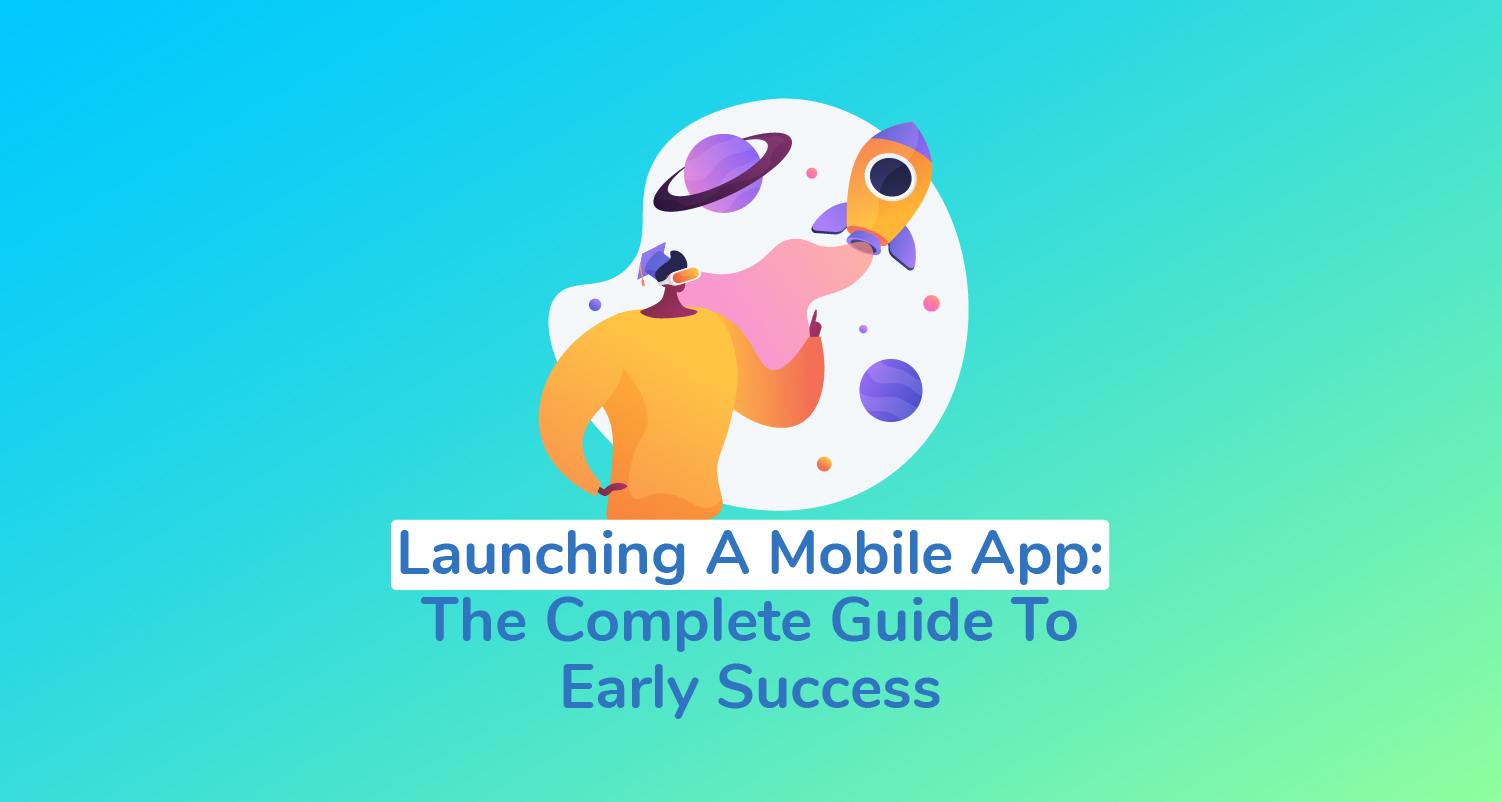
5 Actionable Mobile App Marketing Hacks To Reach 10 Million App Downloads
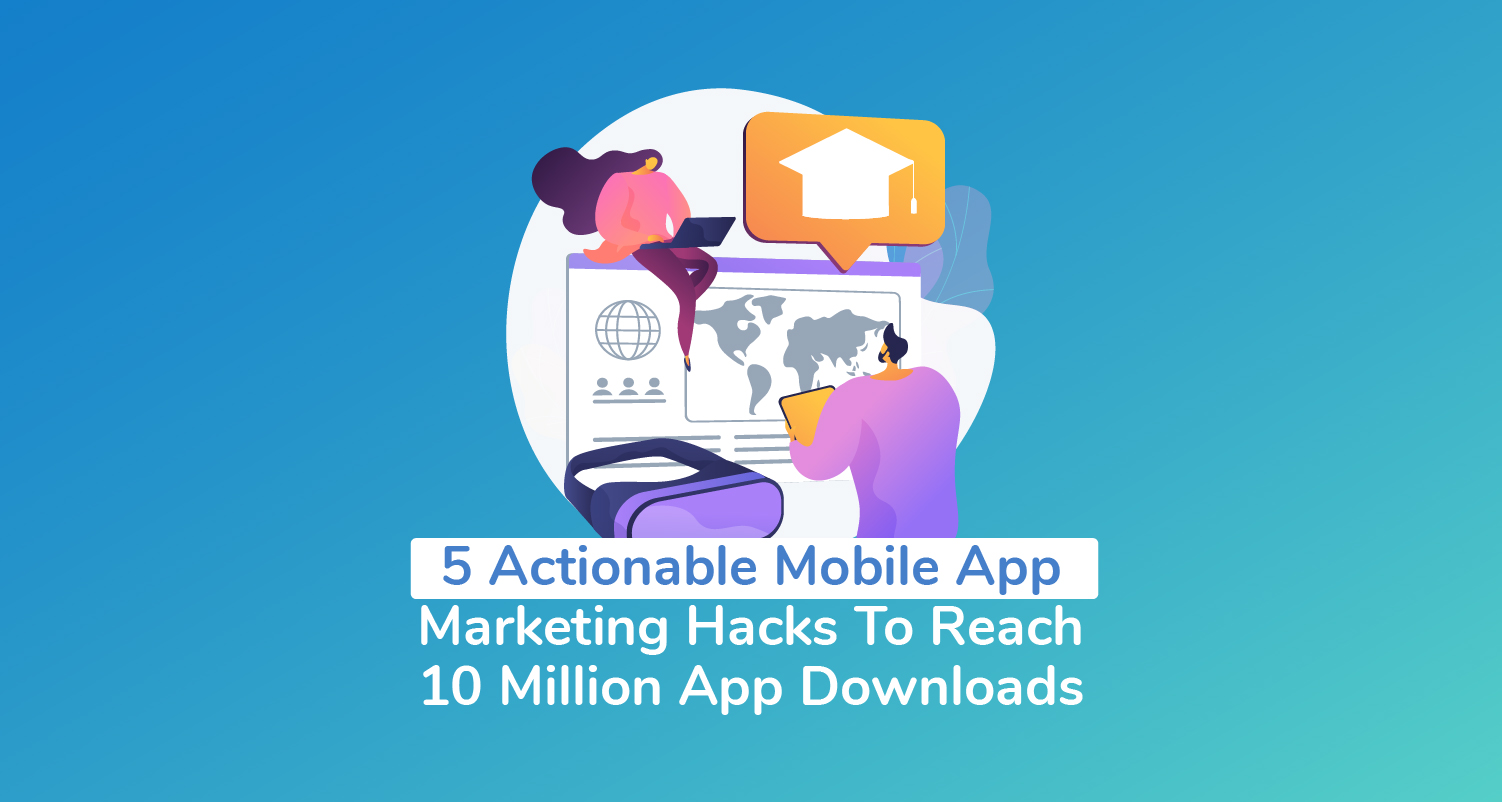
If you were to group App Store and Google Play Store apps by their volume of mobile app downloads, there are three distinct categories of success that your app could possibly fit into.
We’ll call the first group “Strugglers”. These are the little-known mobile apps with fairly flat growth curves. After a cold app launch, they struggle to find their footing in the market, before stagnating with less than a hundred thousand mobile app downloads, and far fewer active app users.
Table of Contents
- The True Value Of Mobile App Marketing
- How To Get 10 Million App Downloads – The 5 Most Effective App User Acquisition Tricks
- #1. Go Beyond Basic App Store Optimization With In-Depth Data Analytics
- #2. Supplement Your Organic App Downloads With Paid App User Acquisition
- #3. Incentivize Your In-App User Referrals
- #4. Build Awareness Through A Beta Launch
- #5. Gain Overnight Social Media Fame With Viral Video Marketing
- Key Takeaways – Here’s How You Can Hit The Ground Running
Just above that is the “Moderately Successful” group of apps, which launch to a somewhat receptive market and then proceed with a rather steady growth curve. This is where you find a couple of fairly renowned iOS and Android apps – with mobile app download numbers that stretch from hundreds of thousands to maybe nine million or so.
Beyond that middle category is the exclusive class of “Highly Successful” mobile apps. These are the App Store Hall of Famers that hit the ground running during app launch, and then manage to gain just enough fame to shake up the market quite extensively. The mobile app downloads here start at 10 million, with the most popular apps boasting billions of active users.
Ok, what am I driving at with these three categories of mobile apps?
Well, here goes the question that I’ve been gradually building up to. What exactly would you say is the one thing that defines the success of these three groups of mobile apps? Or rather, what do you think ultimately separates the highly successful apps from the rest?
I say mobile app developers would probably attribute it to the quality and build of the mobile apps. But, you know what? They’d be wrong. It’s actually mobile app marketing that takes the driver’s seat when it comes to app user acquisition and app downloads.
Now, this is where I invite you to follow along until the end and prove it all for yourself. Most importantly, though, this detailed guide follows up on that with practical tips on how you can truly leverage mobile app marketing to advance to the level of “Highly Successful” mobile apps.
In fact, you’ll be surprised that we’re not talking about generic mobile app marketing. Rather, the insights go beyond the surface level to reveal 5 particularly clever app promotion tricks that’ll keep you ahead of your competitors’ campaigns – to the point of generating more than 10 million mobile app downloads.
The True Value Of Mobile App Marketing
Now, don’t get it all wrong. We’re not belittling the critical role that mobile app development plays in the app’s journey.
While there’s no denying that the technical specifications that come with your mobile app contribute substantially to its success, the fact of the matter is, they’d get you nowhere without strategic mobile app marketing.
Yes, that’s right. Take it from me – if you were to choose the one thing that has the greatest potential for influencing your app downloads, the correct answer would be mobile app marketing.
And why is that?
Well, suggest you take a moment to think deeply about it. You see, at a time when the Apple App Store hosts over 2.2 million iOS apps while the Google Play Store has published close to 3.5 million Android apps, it’s pretty evident that competitor apps don’t just share the same app categories.
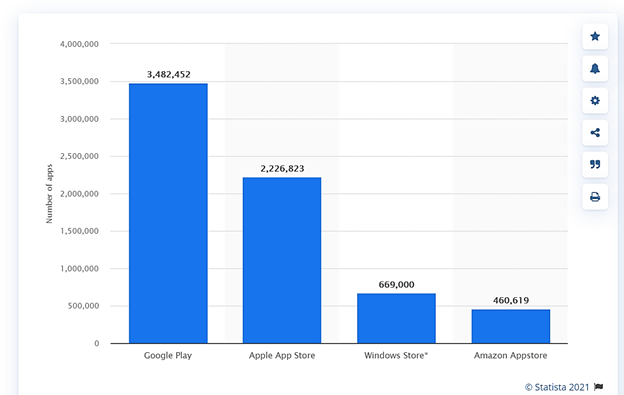
Many of them now come with very identical use cases – complete with similar solutions and functionalities. It’s almost as if their mobile app developers have been copying the underlying source codes from each other
So extensively have the app ideas been replicated, in fact, that it’s almost impossible to find an App Store app with a completely unique twist. Instead, you’ll notice that every popular keyword search across the App Store platforms now generates several app options.
Consider, for instance, running a search on “QR Code Apps” or maybe something odd like “Chinese App”. All the platforms will hit you with an overwhelming variety of mobile apps across both paid and organic search results.
To identify the best mobile app from such a collection of seemingly identical solutions, App Store users typically begin by eliminating the “Strugglers”. They choose to ignore the least popular app options that appear to offer the most basic features, and instead, direct their attention to the well-built “Moderately Successful” and “Highly Successful” apps.
Now, this is where mobile app marketing ultimately makes the difference. You see, in situations where iPhone or Android device users could potentially find themselves torn between different well-built app options, it’s always the most popular top-ranking apps that carry the day.
With many mobile app developers now matching up to each other in terms of technical capabilities and build quality, the app user acquisition contest between close competitors ultimately comes down to their mobile app marketing efforts.
In particular, here are the 5 of the most effective mobile app marketing tactics that you might want to apply across the core digital platforms. These, combined, have the capacity to push your mobile app downloads beyond 10 million.
And just for the sake of clarity, keep in mind that I’ve compiled this list after more than ten years of running all sorts of paid and organic mobile app promotions. The opportunities allowed me to not only generate over a billion mobile app downloads but also progressively test out various approaches to confirm their efficacy.
How To Get 10 Million App Downloads – The 5 Most Effective App User Acquisition Tricks
#1. Go Beyond Basic App Store Optimization With In-Depth Data Analytics
By now, it’s not a secret anymore that the largest chunk of mobile app downloads comes from keyword searches within the App Store.
Although recent industry research studies report varying statistics on different app user acquisition channels, they all conclude that App Store search is significantly ahead of the rest.
Google itself partnered with Ipsos to conduct a survey on How People Discover, Use, and Stay Engaged With Apps. One of their most notable findings is that nearly half of smartphone users discover new apps while browsing through their phone’s app stores.
And while family/friend recommendations appear to lead the pack with about 51%, app store recommendations and browsing combined account for so much more.
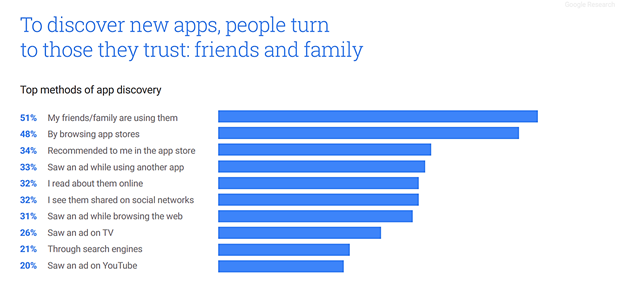
Now, going by these figures, you could say that App Store Optimization is not an optional strategy. It’s compulsory for anyone who intends to reach 10 million mobile app downloads.
Fair enough. But, what exactly does it entail?
Well, App Store Optimization is pretty much like SEO for the iOS App Store and Google Play Store. Each of these platforms has its distinct set of guidelines on how you should tweak your App Store page to rank favorably on relevant keyword searches.
You can check out this guide for ASO basics. It advises mobile app marketers to optimize elements like keywords, app name, app description, app screenshots, app demo videos, app titles, etc.
App Store Optimization doesn’t stop there, though. These basic tweaks are barely sufficient to earn and maintain the top-ranking positions across the most competitive App Store search keywords.
You see, the problem is, App Store Optimization isn’t that exclusive. So accessible are the guidelines that you can bet your competitors are already using them – thus making it difficult for your mobile app to get discovered organically.
Thankfully, even with the odds against you, it’s possible to turn the tables against competitors who’ve already optimized their App Store pages. The trick is to simply take your ASO up a notch using the power of advanced App Store Optimization tools.
This doesn’t even have to cost you anything. You could, for example, go for the free cloud-based AppReport tool by PreApps, and then have it analyze your App Store Optimization standing.
The tool itself takes just seconds to thoroughly assess your app’s Google Play Store or App Store page, from which it generates in-depth insights into your overall ASO performance. You can then use the reports to identify areas that need to be tweaked further, or perhaps rectified. PreApps AppReport even goes ahead to provide recommendations to help you resolve the errors.
Other than that, you can cunningly try to steal traffic from your most established competitors by inserting their brand keywords into your App Store page.
An assessment of the top 500 App Store search keywords shows that 90% of the top 50 contain brand names. The share then increases to 100% when it comes to the top 10 search terms.
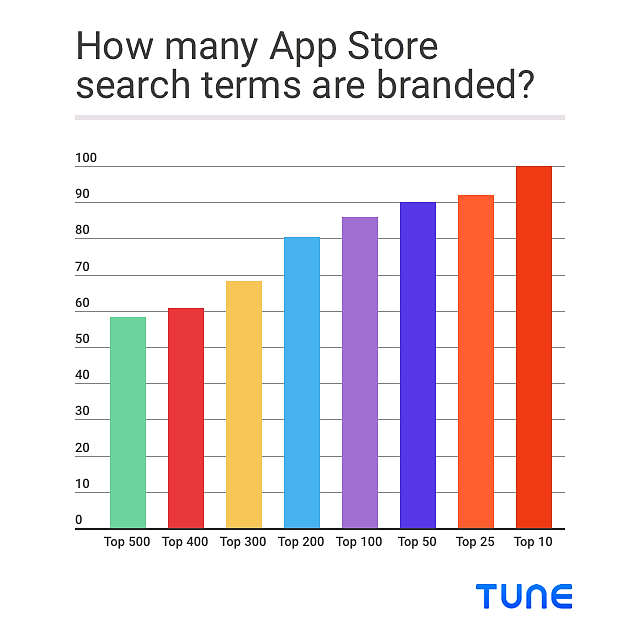
This means that App Store visitors overwhelmingly prefer to run their searches using renowned brand names. Therefore, instead of proceeding with regular category keywords, it would be advisable to cleverly integrate the terms that your biggest competitors popularly identify with.
One particular mobile app that has successfully used this tactic to rise to the top is the Chingari app. Once the short video app launched into the market in 2018, it was quick to ride on popular branded keywords for social audio apps and video platforms.
The rest, as they say, is history – the Chingari app was able to woo even TikTok users, and has since garnered more than 10 million app downloads.
Moving forward, you might also want to look out for any developing algorithm updates that could impact your App Store search ranking. On the occasions that Apple has upgraded its App Store search algorithms, the onus has always been on the app publishers to review their standings and readjust accordingly.
It is such subtle but well-informed ASO tactics that have seen PreApps empower over 3,300 apps by boosting their mobile downloads tenfold.
#2. Supplement Your Organic App Downloads With Paid App User Acquisition
While paid mobile app promotions are widely perceived as alternatives to organic mobile marketing, you ought to approach the whole thing with an open mind.
Currently, more than 90% of all mobile app downloads in the world are driven by organic app marketing campaigns. That undeniably places organic strategies way ahead of paid app user acquisition.
This fact, however, doesn’t render the paid options useless. 10% is still a significant chunk of app downloads – as it would, for instance, translate to 1 million new app users for every 10 million mobile app downloads.
In that case, you might not want to restrict yourself to organic campaigns. You should, instead, set up all-inclusive mobile app marketing campaigns, with both inorganic and organic tactics supplementing each other.
As a matter of fact, paid app marketing is not as static and independent as some would assume. Rather, it tends to work in tandem with organic app marketing, with each paid app install eventually leading to a 150% growth rate in the corresponding organic mobile app downloads.
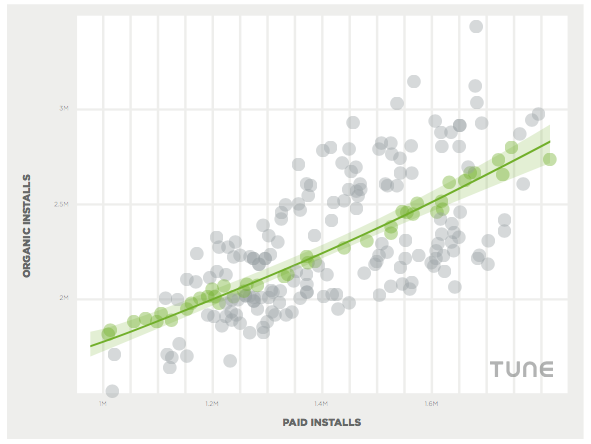
But then again, what types of paid mobile app marketing campaigns should you prioritize?
Well, that depends on where your target audience hangs out.
You should, in particular, look into paid ads on social media sites like Facebook, Twitter, Instagram, and Snapchat.
Facebook itself happens to be the number one source for paid app download traffic among social media platforms. At least it allows you to granularly target a wide audience with paid app ads that spread across Facebook, Instagram, Messenger, and the platform’s Audience Network.
Twitter, on the other hand, offers these media-rich Twitter App Cards that intuitively attach videos, text descriptions, and photos. You can use them to showcase your mobile app’s features, without necessarily redirecting Twitter users from the social media site.
It’s worth noting, however, that the most expansive platform for paid mobile app advertising is Google. One of its most impressive assets is the Google Universal App Campaigns platform, which currently accounts for over 50% of all digital paid app installs.
Once you create a campaign with Google UAC, it uses machine learning to reach out to your target audiences across a wide range of Google properties – such as Gmail, YouTube, Paid Search, the Google Display Network, etc. It fundamentally conducts deep analysis in real-time to determine where to display the ads, the ideal targets, the appropriate ad formats, as well as the right combination of text and media.
#3. Incentivize Your In-App User Referrals
Uber happens to be one of the few mobile apps that are widely celebrated for providing solutions to real-life problems. This fact alone, as many would argue, might have been enough to make it an instant hit.
The mobile app’s founders, however, saw things differently. They knew that even with the taxi-hailing functionality, the mobile app still needed a genius marketing plan to create awareness and drive growth.
In fact, Uber wasn’t even the first mobile app to offer such a solution. A man named George Arison, the Founder and CEO of Shift, was first in line with his Taxi Magic app in 2008 – about two years before the launch of Uber.
Unlike Taxi Magic, though, Uber rolled out ambitious in-app user referral incentives, which saw the app grow quite exponentially – to the point of hosting more than 111 million app users by 2019, along with 13 billion in annual revenue.
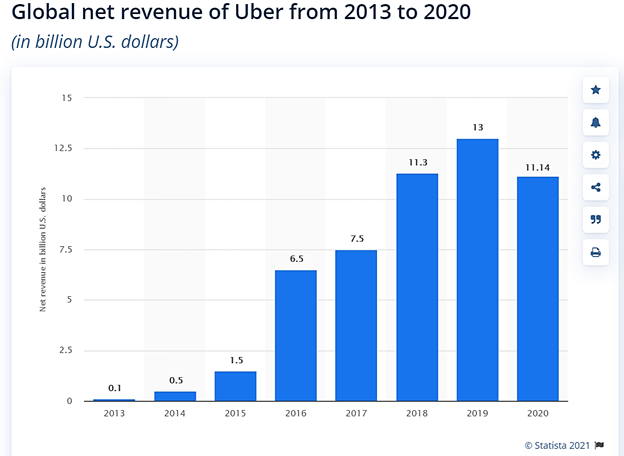
You see, the team at Uber was willing to lose some of their income through free ride offers for its app referrers and referees. Seems risky – but it eventually paid off quite handsomely, as each new app user came in with an average projected lifetime value of $323,190.
Other notable mobile apps that have successfully capitalized on in-app user referrals include Airbnb and Dropbox. Notably, the latter ran an incentivized user referral campaign that triggered a staggering 3900% growth rate. Dropbox essentially expanded from only 100,000 app users to about 4 million in just 15 months.
So, yes, it’s true what they say about incentivized in-app user referrals. Although this is admittedly one of the oldest tricks in the book, it’s still effective in rallying your existing app users. You get to turn them into your marketing agents, who then proceed to recommend the mobile app to their peers in person or via social platforms like Facebook and Twitter.
Here’s a word of caution, though. You have to know when to run the campaign, how to do it, who to target, and how to react to unexpected deviations.
#4. Build Awareness Through A Beta Launch
Long before Facebook acquired Instagram for $1 billion, Instagram founder Kevin Systrom and his team were pretty confident that they had a great app on their hands.
However, they also recognized that even genius apps could potentially collapse without a solid mobile promotion framework. As such, Instagram needed a good mobile app marketing plan to unlock its immense growth potential.
And so, before the mobile was even published in the app stores, Systrom embarked on a mobile app marketing campaign that would get people talking about Instagram. The company wanted to create just enough buzz to warm up the market ahead of the big mobile app launch.
This approach is popularly known as prelaunch app marketing. And, to be specific, Instagram was keen to use influential tech bloggers and its well-networked contacts to spread awareness about the upcoming mobile app.
All these personalities were basically invited to test an early version of the mobile app before the official launch date. This beta launch proved to be a success, as the app testers not only responded positively but also proceeded to spread the news across different digital platforms.
Contacts, for instance, used the early Instagram app to share colorful photos with their Twitter followers. This, of course, got people talking about the revolutionary app on social media.
Tech platforms, on the other hand, published rosy stories about the mobile app. Techcrunch, for instance, ran one article after the beta launch, and another on Instagram’s App Store launch date.
It’s these subtle but strategic moves during the app pre-launch period that helped Instagram secure a decent following by the time it was launching. So receptive was the market, in fact, that the mobile app acquired 24,000 app users after publishing on the first day, and then 300,000 by its third week.
This was back in 2010 when Instagram was still exclusive to iOS users. The mobile app maintained a steady growth curve on Apple’s platform, and then managed to surpass 10 million app downloads in less than a year of launching.
By the time it was deployed on the Google Play Store in 2012, the news had already reached Android users. And so, they were quick to join the bandwagon in hordes, taking just 22 days to reach 10 million mobile app downloads. All that from a pre-launch app marketing campaign that started with just a beta launch.
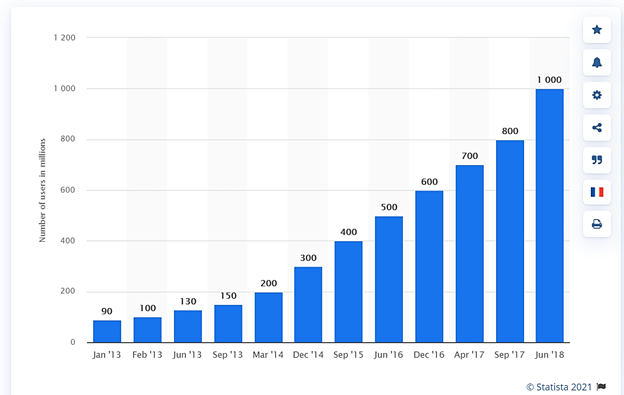
Here’s the kicker, though. While pre-launch app marketing might seem fairly simple and straightforward, it’s a totally different thing when you actually get to it.
For example, establishing a rapport with the most influential press platforms can be a very daunting task. That’s why your best bet would be working with an established app marketing agency that enjoys a well-established network of connections.
#5. Gain Overnight Social Media Fame With Viral Video Marketing
In 2014, Alex Zhu was pretty sure that he was working on a billion-dollar app idea. With his co-founder, they raised a quarter-million dollars from investors and developed an educational app called Cicada. The idea was that experts would shoot and distribute short educational videos across multiple subjects.
Unfortunately, however, things didn’t quite work out as expected. After launching the mobile app, the two soon realized that the mobile app project had failed, leaving them with just 8% of the initial funds.
Thankfully, though, that shortfall didn’t quite take them out of the game. It wasn’t long before Zhu developed another mobile app idea after seeing teenagers listening to music and taking selfies. This is when the two app developers scrambled to build Musical.ly, a DIY app that helps users make short music videos through their phones.
While their previous education-themed mobile app project failed to elicit user interest, Musical.ly was an absolute banger among teenagers. Once it launched to a warm reception, it’s the app users themselves who proceeded to spread the news through viral user-generated videos.
By making the videos shareable on social media, the app’s founders were able to cleverly capitalize on viral marketing to boost growth. In two months, Musical.ly had even climbed to the number 1 spot in the App Store, and it remains one of the few Chinese apps to grow tremendously in the U.S.
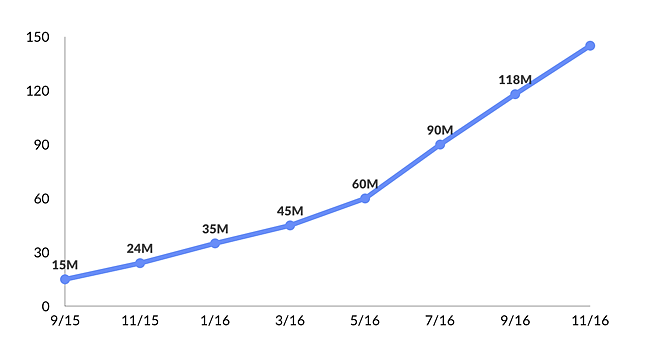
Now, guess what? It’s Musica.ly that was ultimately rebranded into TikTok. The app’s core principle, however, remains the same. It continues to facilitate cross-platform sharing of user-generated videos, and the results have been impressive.
The viral videos have gained TikTok so much fame, that it still maintains the top position globally in terms of app user acquisition. In 2020 alone, TikTok generated about 850 million mobile app downloads – making it the most popular app across the globe.
It outshined even the fast-growing healthcare and contact tracing apps that were developed specifically to assist in combating the 2020 Covid-19 pandemic. I’m talking about the likes of the NHS Covid 19 app, which managed to attract more than 10 million app installs in less than a year – mostly due to its NHS test tracking capabilities.
Now, with that said, we can agree that the good thing about viral video marketing is, it can indeed get you those coveted 10 million mobile app downloads in less than a week.
On the flip side, though, it turns out that developing a good viral video marketing plan is not as simple as compiling app demo videos. For the best possible outcome, you might want to work closely with an app marketing expert who understands how to form emotional connections with your target audiences on social media.
Key Takeaways
To sum it all up, here are the main points that you ought to keep in mind:
- While there’s no denying that the technical specifications that come with your mobile app contribute substantially to its success, the fact of the matter is, they’d get you nowhere without strategic mobile app marketing.
- In situations where iPhone or Android device users could potentially find themselves torn between different well-built app options, it’s always the most popular top-ranking apps that carry the day.
- With many mobile app developers now matching up to each other in terms of technical capabilities and build quality, the app user acquisition contest between close competitors ultimately comes down to their mobile app marketing efforts.
- Nearly half of smartphone users discover new apps while browsing through their phone’s app stores.
- App Store Optimization is pretty much like SEO for the iOS App Store and Google Play Store. Each of these platforms has its distinct set of guidelines on how you should tweak your App Store page to rank favorably on relevant keyword searches.
- It’s possible to turn the tables against competitors who’ve already optimized their App Store pages. The trick is to simply take your ASO up a notch using the power of advanced App Store Optimization tools.
- PreApps AppReport takes just seconds to thoroughly assess your app’s Google Play Store or App Store page, from which it generates in-depth insights into your overall ASO performance.
- You can cunningly try to steal traffic from your most established competitors by inserting their brand keywords into your App Store page.
- An assessment of the top 500 App Store search keywords shows that 90% of the top 50 contain brand names. The share then increases to 100% when it comes to the top 10 search terms.
- On the occasions that Apple has upgraded its App Store search algorithms, the onus has always been on the app publishers to review their standings and readjust accordingly.
- Currently, more than 90% of all mobile app downloads in the world are driven by organic app marketing campaigns.
- You should set up all-inclusive mobile app marketing campaigns, with both inorganic and organic tactics supplementing each other.
- Each paid app install eventually leads to a 150% growth rate in the corresponding organic mobile app downloads.
- Facebook itself happens to be the number one source for paid app download traffic among social media platforms.
- The Google Universal App Campaigns platform currently accounts for over 50% of all digital paid app installs.
- Uber’s in-app user referral incentives grew the app quite exponentially – to the point of hosting more than 111 million app users by 2019, along with 13 billion in annual revenue.
- Dropbox’s incentivized user referral campaign triggered a staggering 3900% growth rate, which had it expanding from only 100,000 app users to about 4 million in just 15 months.
- In 2020 alone, TikTok generated about 850 million mobile app downloads – making it the most popular app across the globe.
- It turns out that developing a good viral video marketing plan is not as simple as compiling app demo videos. It’s best reserved for app marketing experts who understand how to form emotional connections with social media audiences.
Conclusion – Here’s How To Hit The Ground Running
Overall, I’d say it would take a generic mobile app about two years to build that many downloads with these marketing hacks. A well-developed application, on the other hand, would require about a year and a half or so to rally the numbers.
The whole process doesn’t have to take that long, though. With a seasoned mobile marketing agency on your side, it’s possible to cut the lead time to months or weeks.
Then for strategic mobile apps that specifically entrust their marketing to PreApps, you get to leverage, not just pre-launch and post-launch campaigns, but also proven tactics for optimizing user retention. That means that in addition to acquiring the 10 million new app users, we’ll help you retain them for increased profitability.
Talk to us today to see it all in action. And while you’re at it, feel free to let us know your precise mobile app growth plans, for the purposes of developing custom-tailored marketing plans.
Newsletter
Don’t miss a thing! Sign up to receive daily news
Subscribe Newsletter




